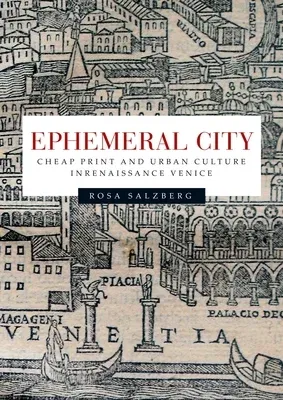Ephemeral city explores the rapid rise of cheap print and how it
permeated Venetian urban culture in the Renaissance. In contrast to the
familiar image of Venice as the tranquil, ordered 'Serenissima', it
evokes the noisy, shifting, transient life of the city at street-level,
and offers the first view of one of the city's most productive and
creative industries from the bottom up. The result is a new and
unexpected vision of Renaissance culture, characterised by the fluid
mobility and dynamic intermingling of texts, ideas, goods and people.
The book follows the flood of cheap print (pamphlets, fliers and
broadsheets) that streamed from Venetian presses from the late fifteenth
century - the most visible and accessible products of the press, often
peddled in the streets and declaimed by public performers. Closely
intertwined with oral culture, such texts helped to open up new publics
for literature, providing information and entertainment to diverse
audiences and transforming the city into an epicentre of vernacular
literature and performance. Examining the ways in which the production
and dissemination of cheap print infiltrated the Venetian urban
environment and changed the course of the city's cultural life, the book
also traces how local authorities sought to channel these flows by
escalating censorship and control over the course of the sixteenth
century. The book will be of interest to scholars and students of early
modern European and Italian Renaissance culture and society and the
history of the book and communication.

